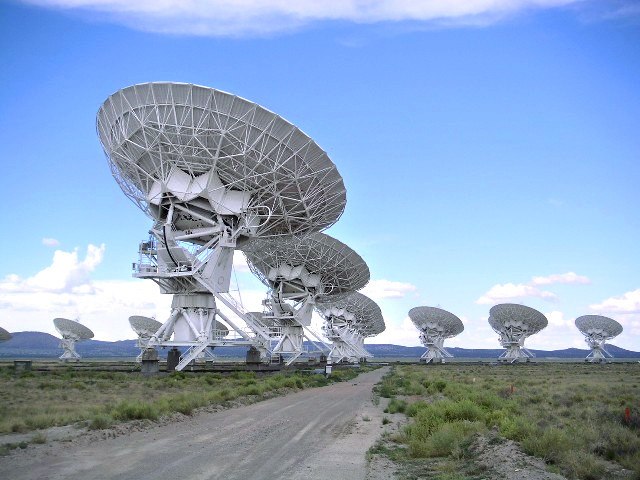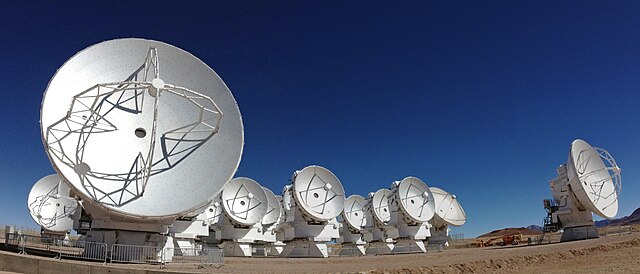Radio astronomy is a subfield of astronomy that studies celestial objects at radio frequencies. The first detection of radio waves from an astronomical object was in 1933, when Karl Jansky at Bell Telephone Laboratories reported radiation coming from the Milky Way. Subsequent observations have identified a number of different sources of radio emission. These include stars and galaxies, as well as entirely new classes of objects, such as radio galaxies, quasars, pulsars, and masers. The discovery of the cosmic microwave background radiation, regarded as evidence for the Big Bang theory, was made through radio astronomy.
The Karl G. Jansky Very Large Array, a radio interferometer in New Mexico, United States
Chart on which Jocelyn Bell Burnell first recognised evidence of a pulsar, in 1967 (exhibited at Cambridge University Library)
The Atacama Large Millimeter Array (ALMA), many antennas linked together in a radio interferometer
An optical image of the galaxy M87 (HST), a radio image of same galaxy using Interferometry (Very Large Array – VLA), and an image of the center section (VLBA) using a Very Long Baseline Array (Global VLBI) consisting of antennas in the US, Germany, Italy, Finland, Sweden and Spain. The jet of particles is suspected to be powered by a black hole in the center of the galaxy.
Karl Guthe Jansky was an American physicist and radio engineer who in April 1933 first announced his discovery of radio waves emanating from the Milky Way in the constellation Sagittarius. He is considered one of the founding figures of radio astronomy.
Karl Guthe Jansky
Karl G. Jansky Very Large Array, National Radio Astronomy Observatory, New Mexico
Full-size replica of Jansky's radio telescope, now at the Green Bank Observatory
Green Banks plaque: Jansky Antenna








